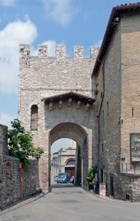

Ponti dei Galli and Ponte San Vittorino
This walk of some 5 km explores the Tescio river, north west of Assisi. Much of it is in the Bosco di San Francesco, which has been formally opened to the public by the Fondo Ambiente Italiano since my last visit.
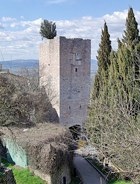
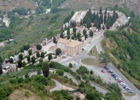
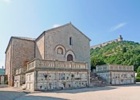
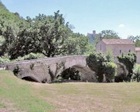
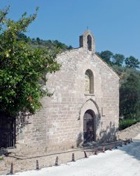
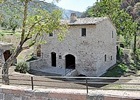
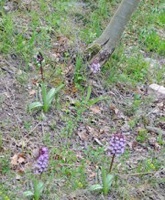
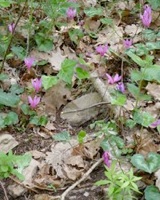
There are two options for the next part of the walk:
-
✴option I, along the road on the far side of the river; or
-
✴option II, following the paths along the bank nearer to Assisi.
Both options have good views of the Sacro Convento in their later stages, although those from the road are better. The woodland route offers wild orchids and cyclamen in the Spring. You can change between them at the second Ponte dei Galli (see below).
Option I
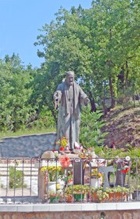
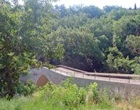
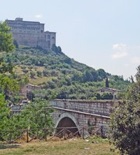
Cross the bridge and walk along Viale Giovanna di Savoia, Regina dei Bulgari towards Assisi. This road is named for Giovanna di Savioa, the daughter of King Victor Emmanuel III, who married Tsar Boris III of Bulgaria in 1930 (in a ceremony attended by Benito Mussolini) and who was buried in Assisi in 2000. Fork left at Piaggia di San Francesco, where the two options above converge.
Option II
The start of the path along the bank of the river nearer to Assisi is blocked (as at April 2011) by the construction site around Santa Croce. You therefore need to retrace your steps along the road, with the path below you on the right. You can hurdle the safety barrier after about 50 meters and take the path you will see there that joins it.
Continue to another bridge that is also called Ponte dei Galli (1193). There are two paths ahead, either of which will serve your purposes:
-
✴The lower one, which is way-marked, follows the river.
-
✴If you take the other one, which is the Selva di San Francesco, turn uphill at each opportunity, taking the wooden steps when you see them. There were rockfall warnings on a short stretch of this path in 2011, but it was easily passable. Continue along the path until it meets a track at a hairpin, and turn right to follow the track downhill.
The two paths meet just before a house, after which you turn left at Piaggia di San Francesco.
Options I and II converge here.
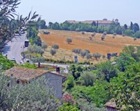
Monte Subasio
This circular journey from Assisi (13 km) is best done by car. It takes in:
-
✴the Eremo dei Carceri (which can alternatively be visited after a strenuous hike from Porta Cappuccini - see Walk I);
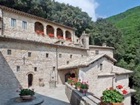
-
✴the original site of Sant’ Angelo in Panzo (a turning on the right as you return to Assisi).
Rivotorto and Santa Maria degli Angeli
These two important churches and a number of smaller ones are linked here in a long but easy walk along the southern side of Assisi (about 14 km or 3 hours walking). There are numerous options for shortening it, as will become clear.
The walk starts with Santa Trinita and Santa Maria di Rivotorto: there is the option of taking the bus to the former, or missing it out (which would be a shame) and staying on the bus to the latter.

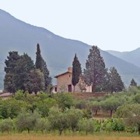
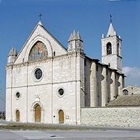

If that is enough for one day, the road between the church and the cemetery leads back to Assisi (3.5 km).
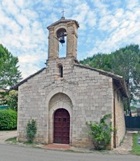
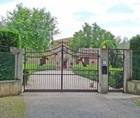
If that is enough for one day, continue along Via San Rufino d' Arce to Assisi (3 km). However, Santa Maria degli Angeli is only 1.5 km away, and you can easily take the bus from there back to Assisi.
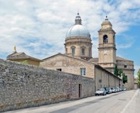
You can now take the bus or walk back to Assisi from Santa Maria degli Angeli.
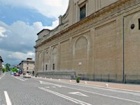
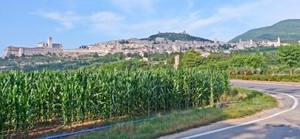
If you are walking, continue to this junction with Via Francesca on the right and Via Ospedale delle Pareti (from which this photograph was taken) on the left. It was from this point that St Francis blessed Assisi in 1226 as his followers took him to Santa Maria degli Angeli to die. The friars then carried his body back to this point and turned right along Via Francesca (on the right) to San Damiano, so that St Clare and her sisters could say their last goodbyes.
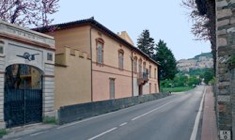
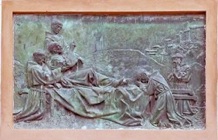
Villa Gualdi in Via Ospedale delle Pareti (behind you in the photograph) stands on the site of a medieval leper hospital, San Salvatore delle Pareti. A relief on its facade depicts the dying St Francis blessing Assisi.
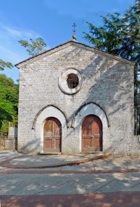
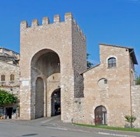
From Porta San Pietro to Rocca Sant’ Angelo
You might like to take a taxi from Porta San Pietro to Rocca Sant’ Angelo (some 13 km to the north west), to see the interesting rural church and convent of Santa Maria della Rocchicciola (sometimes called Santa Maria in Arce).
